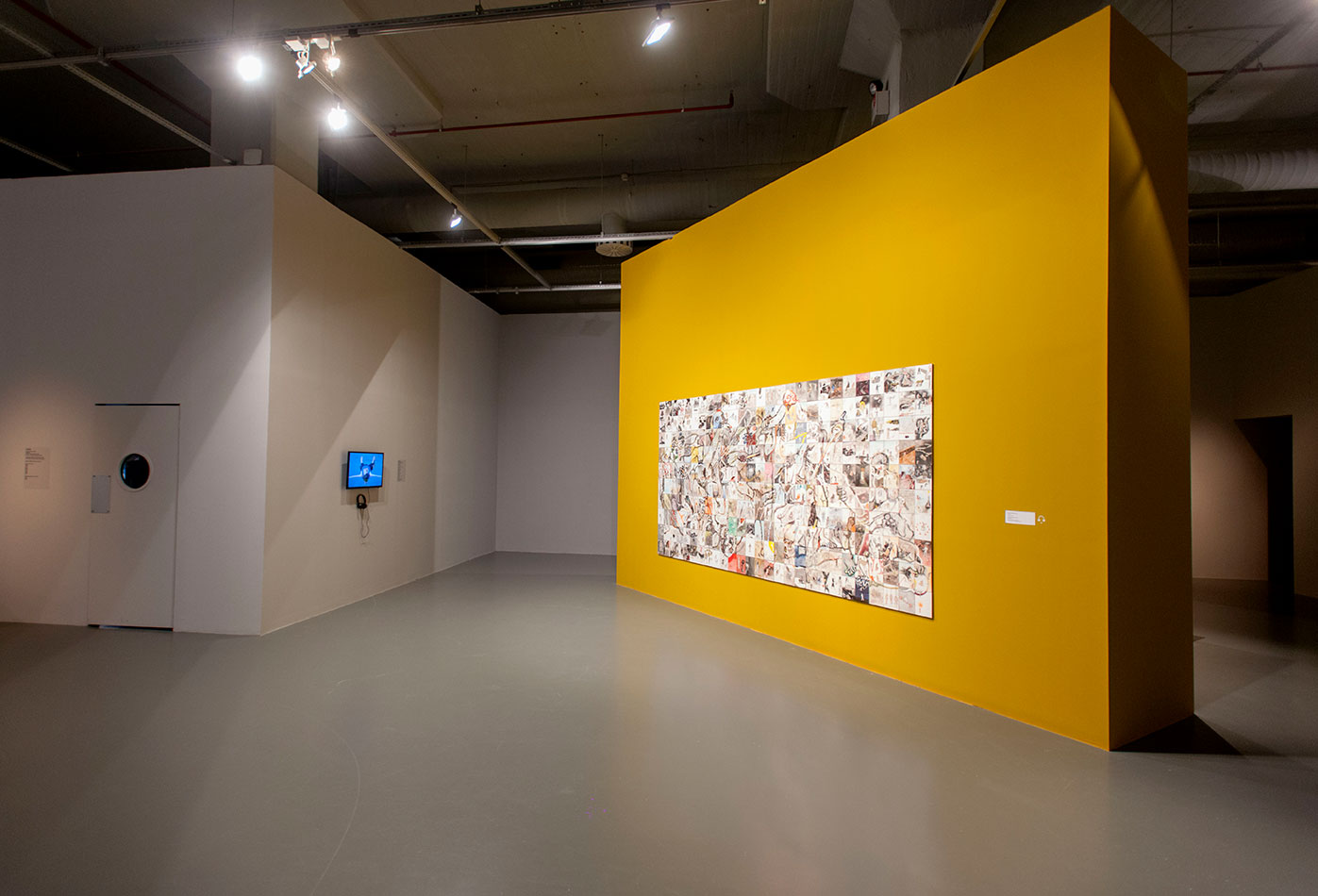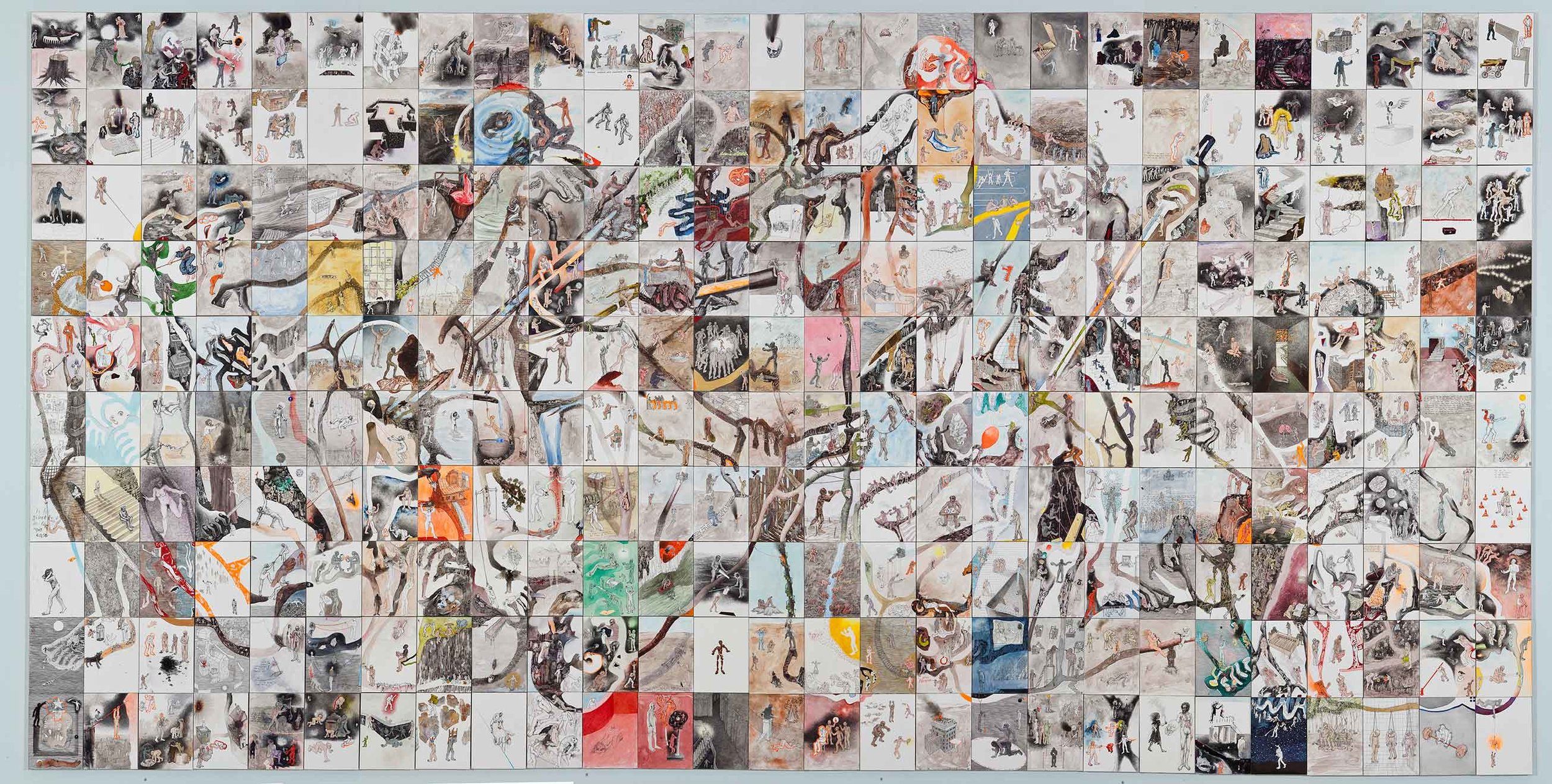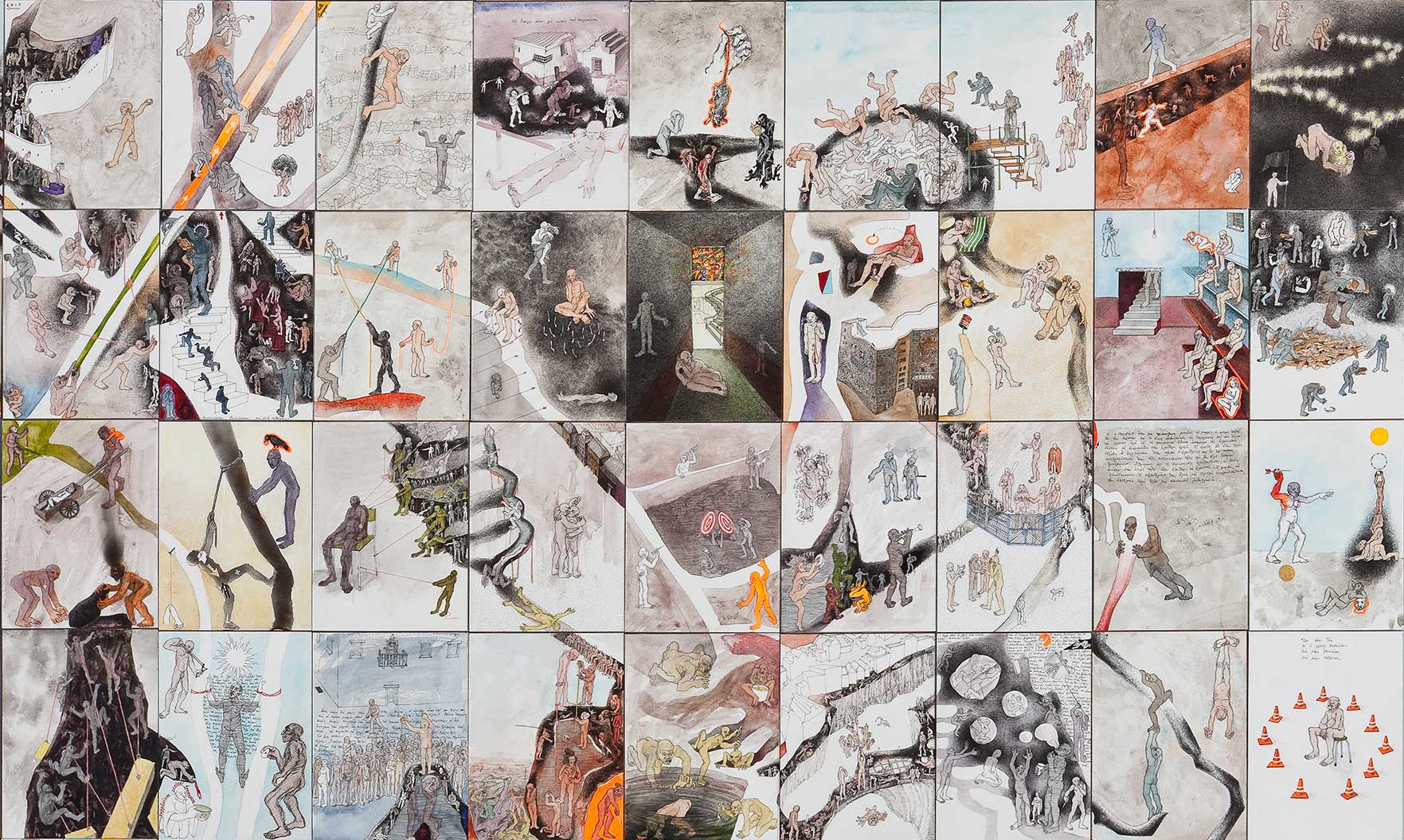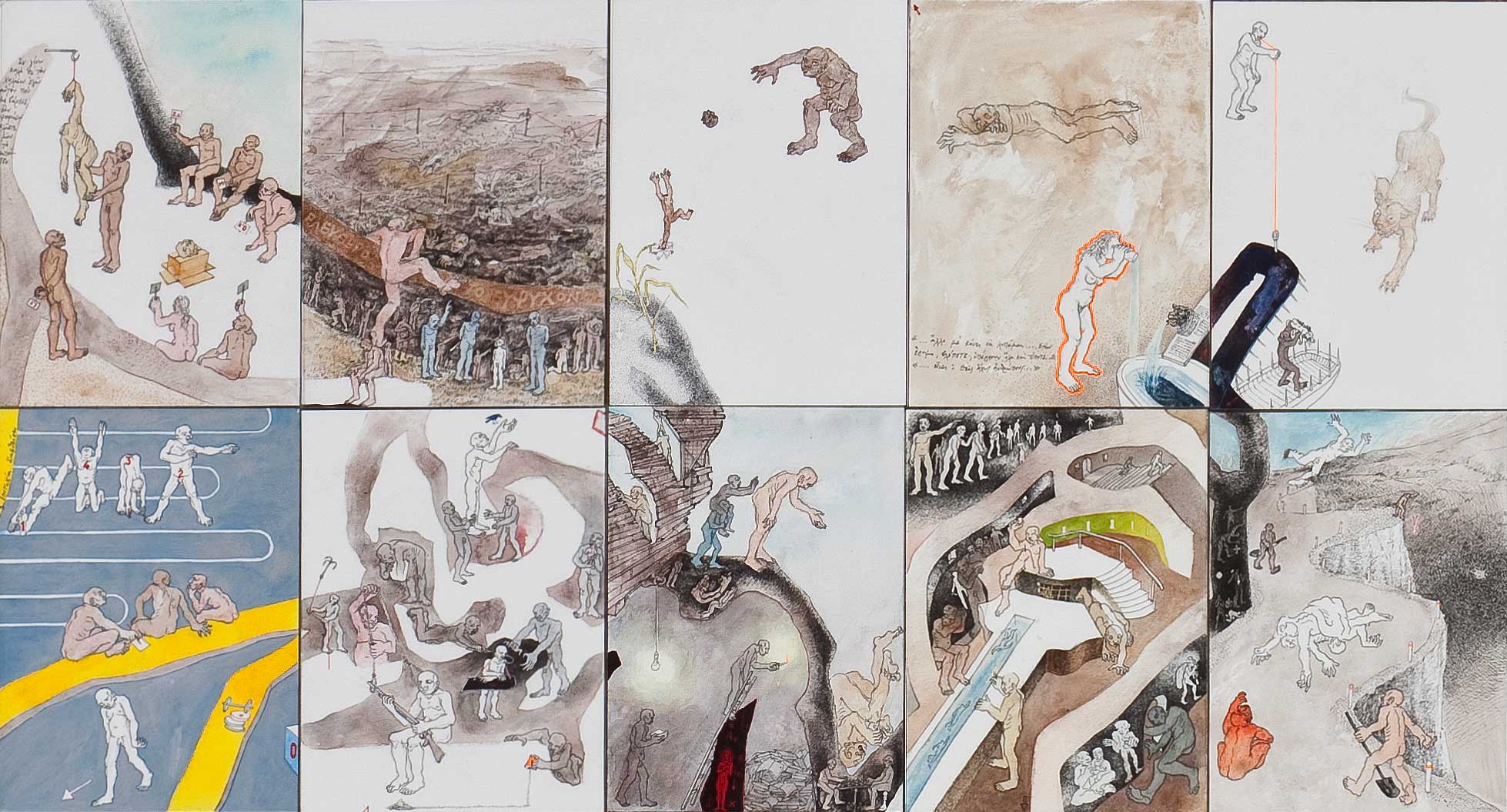Overlook, 2011-2012
ink and acrylic on paper, 190 x 378 cm
Contemporary existence is unable to accommodate the self in life, as it perceives life as an image and the self as one of its parts. The self therefore becomes weak and fractured and survives as a momentary apparition, detached from its history and social context. The power of images establishes a reality that is to a great extent experienced through a series of repeated ideal actions. Man has surrendered to the customs of stereotypical behaviourial patterns, after having renounced his key means of defense -his subjective judgment and desire for a self-willed life- and therefore led to passivity.
With a subtle sarcasm, I comment upon the course of our alienation and passivity through my drawing installation Overlook. The title was chosen because it consists of two opposing meanings: One is "to look, but failing to notice; to ignore or disregard" and the other is exactly the contrary, "to look steadily and intently, especially in admiration, surprise, or thought; to gaze".
The work depicts a series of 270 drawings in ink and acrylic on paper, sized 14 x 19 cm each (overall size 380 x 190 cm). They all present familiar settings of dense and awry narratives that seek to entangle the spectator into a -seemingly- purposeless wandering of the gaze. However, as soon as the viewer distances himself he is able to notice that all drawings shape a larger scene of a violent conflict, an image, which is visible only in overview.
There are three levels of reading the work as a whole: One is by becoming immersed in the individual narrative of each drawing and second is the exact opposite; by distancing oneself. The viewer is subsequently able to realise that each drawing -each fragmentary story- is part of a larger narration; part of a scene of conflict, which refers to social cannibalism. Third is my choice to communicate these ideas through specific channels. For that reason, I have set a common denominator where all scenarios deal with food, desire or social mechanisms and their content share three parameters: political theory, poetry and literature, and street slogans.
Food, desire and social mechanisms are substantial, primordial elements but most importantly, they are shared. Still, I use an awry approach for depicting the narratives in order to show that they are indeed somehow familiar, but also in need of review. It is a conscious procedure wherein the sources from which I extract the content for each composition assist in conveying the idea. The narratives -always grotesque and provoking- either consist of something violent, or extreme. They illustrate unanticipated actions in common environments, or vice versa. Accordingly, action and environment are constantly negating each other’s traits.
Overlook is a drawing installation but does not direct the viewers’ actions. Instead, I construct an environment in which the elements are seemingly motley, but its purpose is to dissolve a procedure. One has to distance himself in order to perceive the whole image; he has to escape the trap of imagery, the trap of the spectacle. In view of that, I placed the element of ‘dexterous’ as a prerequisite for the formation of the work. I deliberately created attractive images, as charm is the ‘trap of the spectacle’, and their multitude, the ‘mechanism of confusion’. This trap and its consequential action create a space and the work generates a movement. The installation illustrates a process where you ought to look without being entrapped in other means of confusion; to notice all details but at the same time distance yourself in order to realise what these details compose in their sum.
We are molded with the spectacle’s dimension of any given situation; we are captives of the image, because we overlook. But as soon as we release ourselves from it, we may realise that every dysfunction or vulgar action happens because we reproduce a situation by being entrapped in an image. The installation operates as an instrument for awareness and contemplation by providing a channel to acknowledge that we are part of this reality. In fact, you are called to see that you are part of a conflict, while the work acts as a perceptual space to decide on your standpoint.
My intention is not to merely show a conflict or a clash, but to rethink elusive terms such as freedom and civilization by setting a perceptual grid. Freedom, “ελευθερία“ in Greek, comes from the word “έλευσις“ which translates “to come”. Similarly, definitions of terms such as democracy and civilization are constantly forthcoming and never hold one terminal point. The concepts of these meanings are ever changing as they are continuously reformed and reshaped. All are abstract values, which require constant re-evaluation. And only by adopting the same process one can consider himself free, democratic or civilized.





